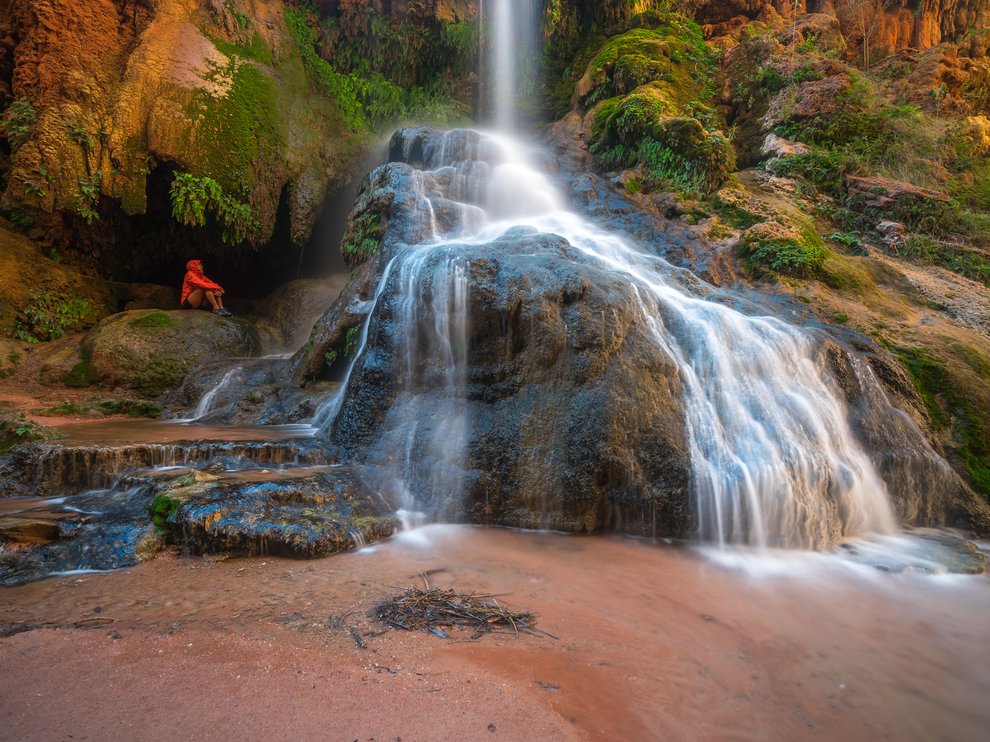Why You Should Go To Havasupai Falls, the Desert Oasis at the Bottom of the Grand Canyon
Many consider the edge of the Grand Canyon to be the ultimate destination, but for me it was just the beginning.
At the trailhead of Hualapai Hilltop, I hiked a mile down the steep, switchback-covered canyon wall and nine miles across the canyon floor until at last finding Havasupai Falls, a force of nature deep in the Arizona wilderness.
To get to this magical spot, I had to be prepared. The hike is about 10 miles each way, with a bit of challenging terrain to get in and out of the canyon. Carrying our camping equipment through the harsh desert heat, it was clear that this hike was no joke. Plenty of preparation, water, and the right supplies were necessary before heading out. After all, I was eight miles away from the closest civilization.

Supai Village
Once I started the hike, it was eight miles to get to the Supai Village, and about two miles to the Havasupai Falls campground from there. In the village, you can find a church, school, restaurant, and more.
A little historical background: The Havasupai tribe (translating to “the people of the blue green water”) has a population of about 639 people. At one point, development and railroads had pushed them back to an area 12 miles long by five miles wide (518 acres). In 1975, they successfully fought for and won back their 188,077 acres of homeland. Once a year for a couple weeks, the falls are closed to the public for the locals to enjoy. It's important to respect their land and leave no trace.
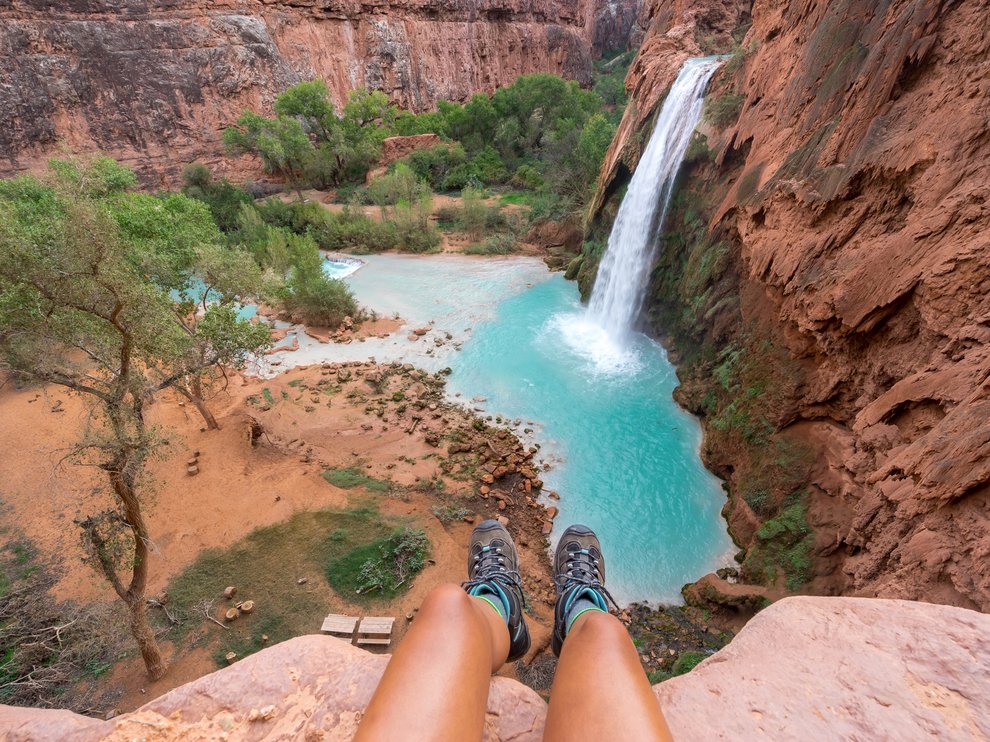
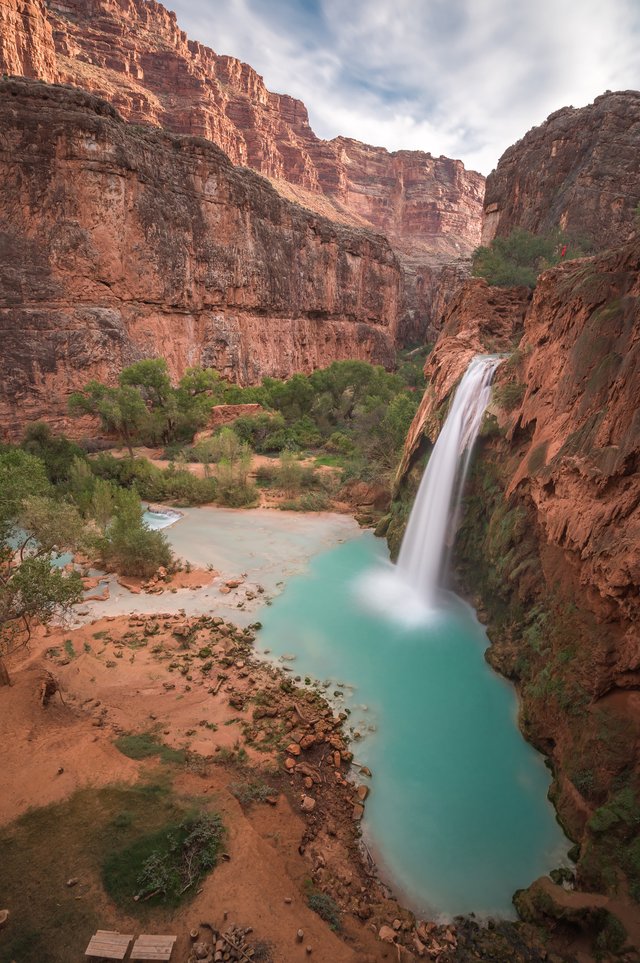
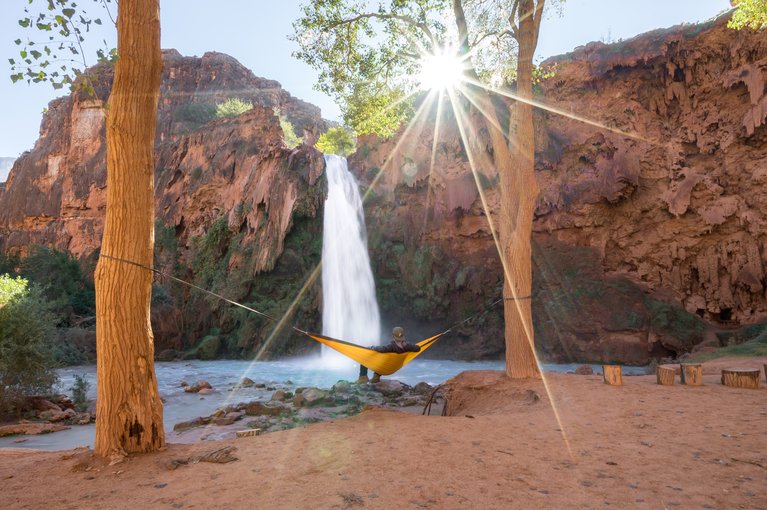
Havasu Falls
The Havasu Falls are the closest to the campsites, so it's often the most crowded. There are great viewpoints from above and at the base of the falls and no shortage of perfect hammock spots to chill out. I could really see the blue-green water here, which has been stored underground in limestone caverns for nearly 30,000 years.
Wandering around Havasupai at night is definitely something everyone should experience while there. Some of the best memories are made after the sun goes down.
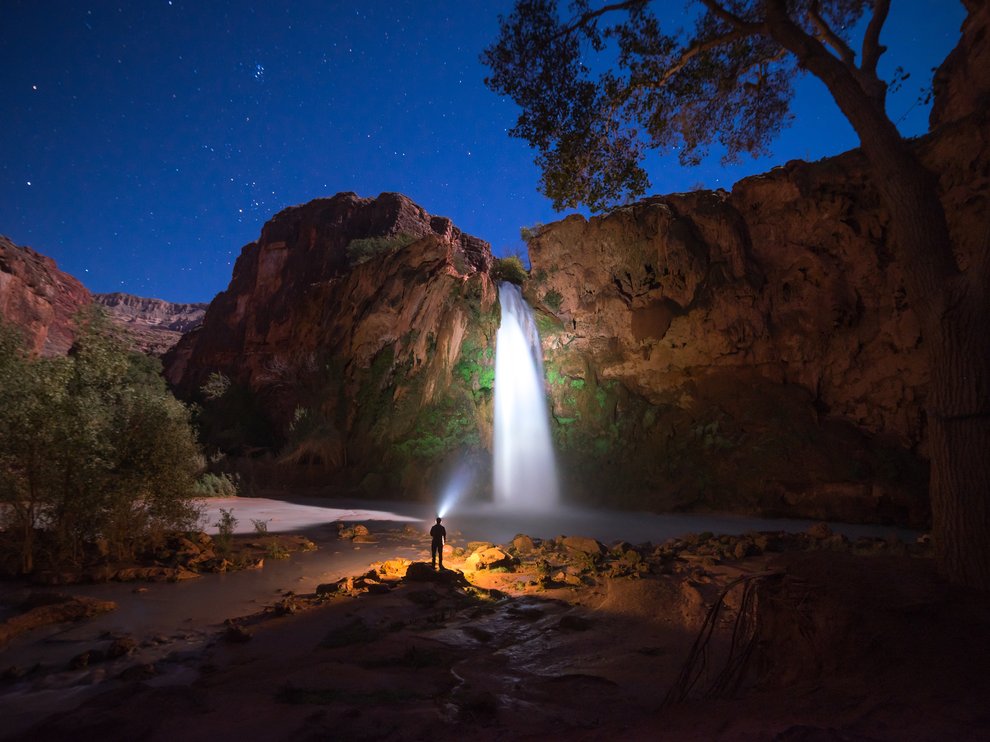
Mooney Falls
The 196 foot drop of Mooney Falls makes them the tallest waterfalls at Havasupai. I arrived at the top of the falls with an incredible view, but the adventure began once we squeezed into the narrow tunnels and caves behind the falls. This one isn’t for the faint of heart, so descend at your own risk!

New Navajo Falls
New Navajo Falls are the first waterfalls I saw after leaving Supai Village. There are lots of different angles you can shoot from here.
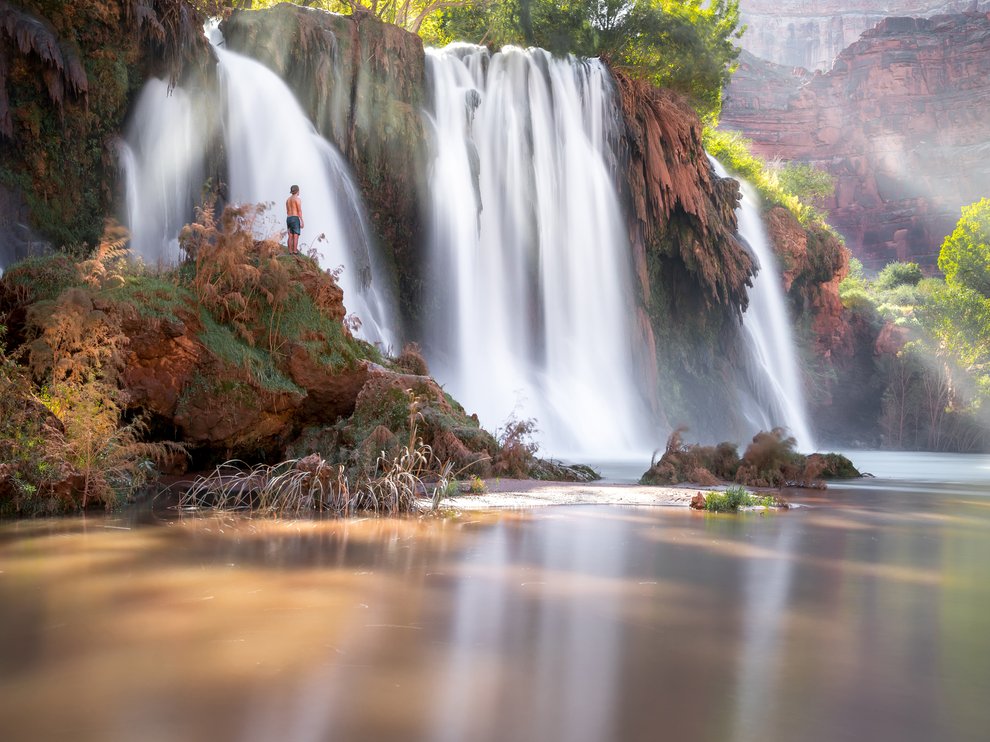
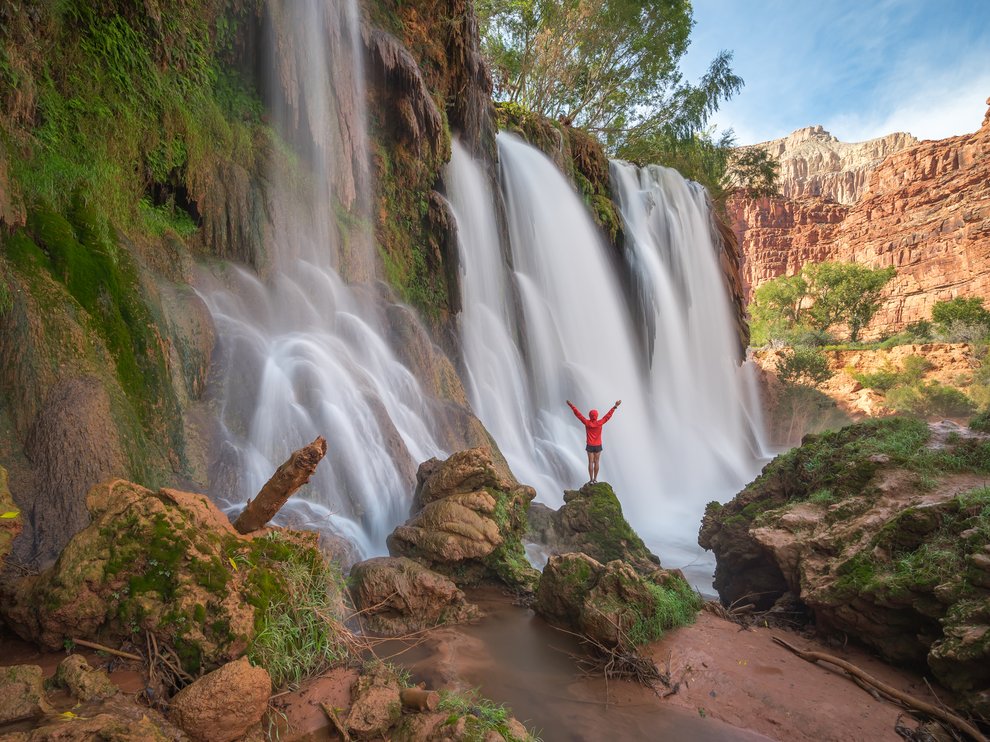
Beaver Falls
Beaver Falls are a three mile trek past the base of Mooney Falls, but it's well worth it. The cascading waterfalls are super unique. I climbed a few ladders throughout the hike, and the terrain is not as easy as the other falls, but that makes it more remote.
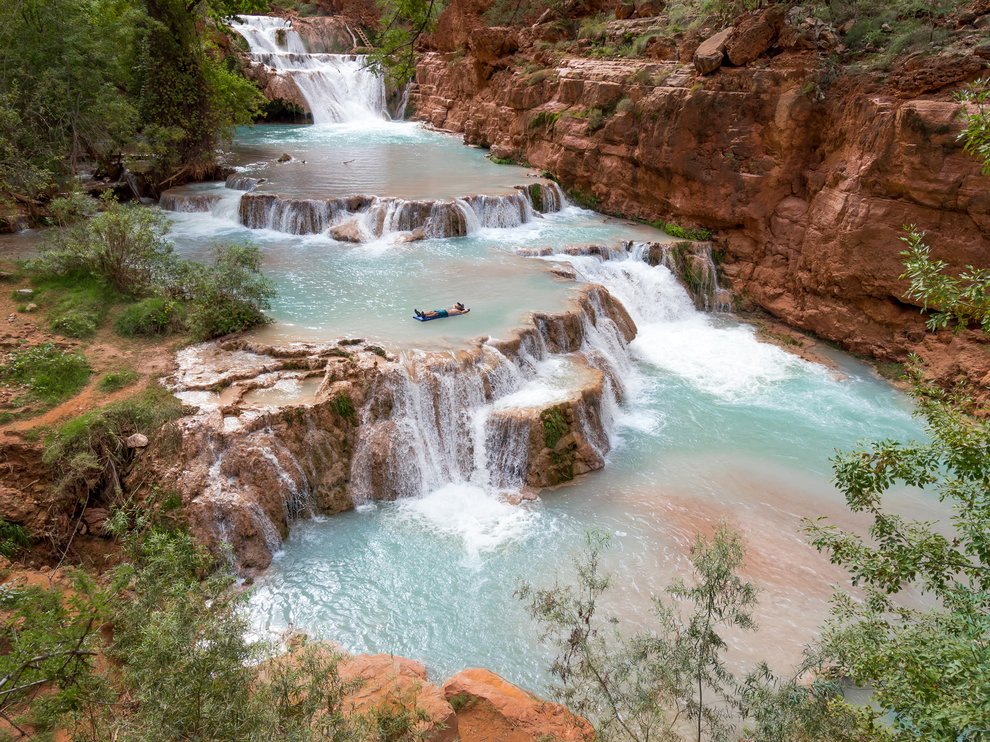
If this trip sounds like it’s for you, here are my recommendations:
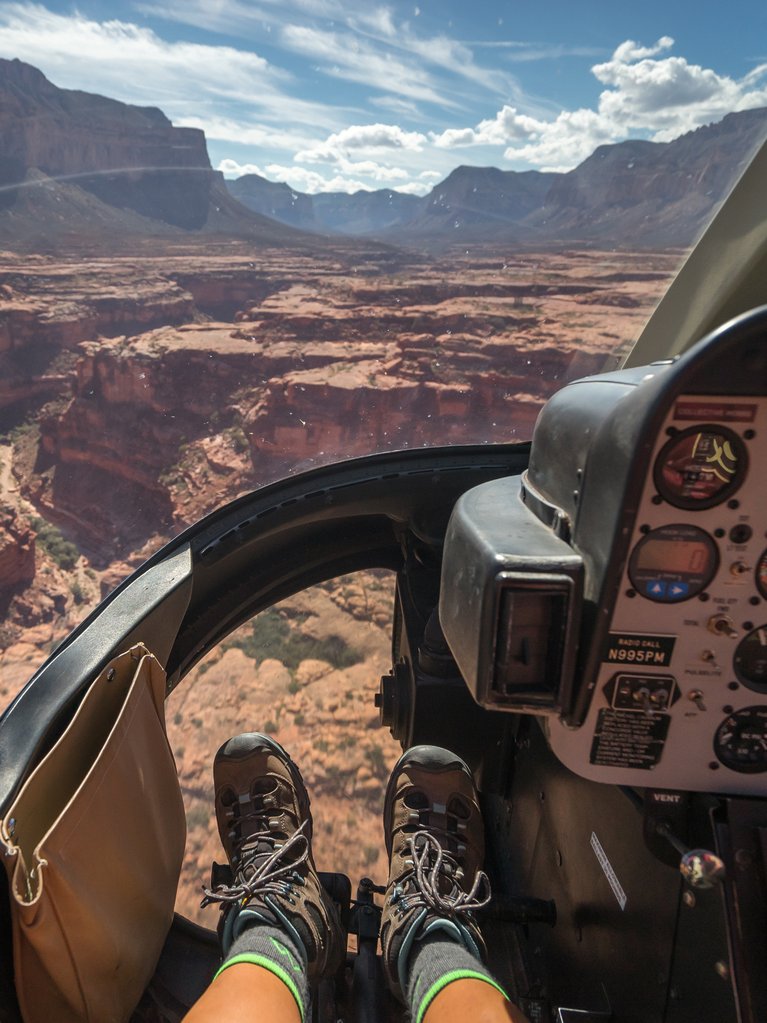
- Keep your group small. Organizing this trip with others can be hard—in my experience, it was best to pick one travel buddy that was committed and ready for the journey ahead.
- Since the hike is about four hours each way, you should plan to spend at least three nights at the campground. The camping is first-come, first-serve, and the best spots are right by the creek. Come early and pick the best spot.
- If you thought the hike down was hard, consider a helicopter trip for the way back. At the time I was there, a one-way trip out of the canyon cost about $85. Definitely worth it if you’re there during the hotter months. Having your packs carried by mules is another cheaper option. Plan in advance.
- Take at least three months to plan this trip of a lifetime. I called the small village office for three weeks straight until I was able to get through to someone in the Supai Village and score a camping permit. Once you get in touch, it’s all downhill from there. ∆
